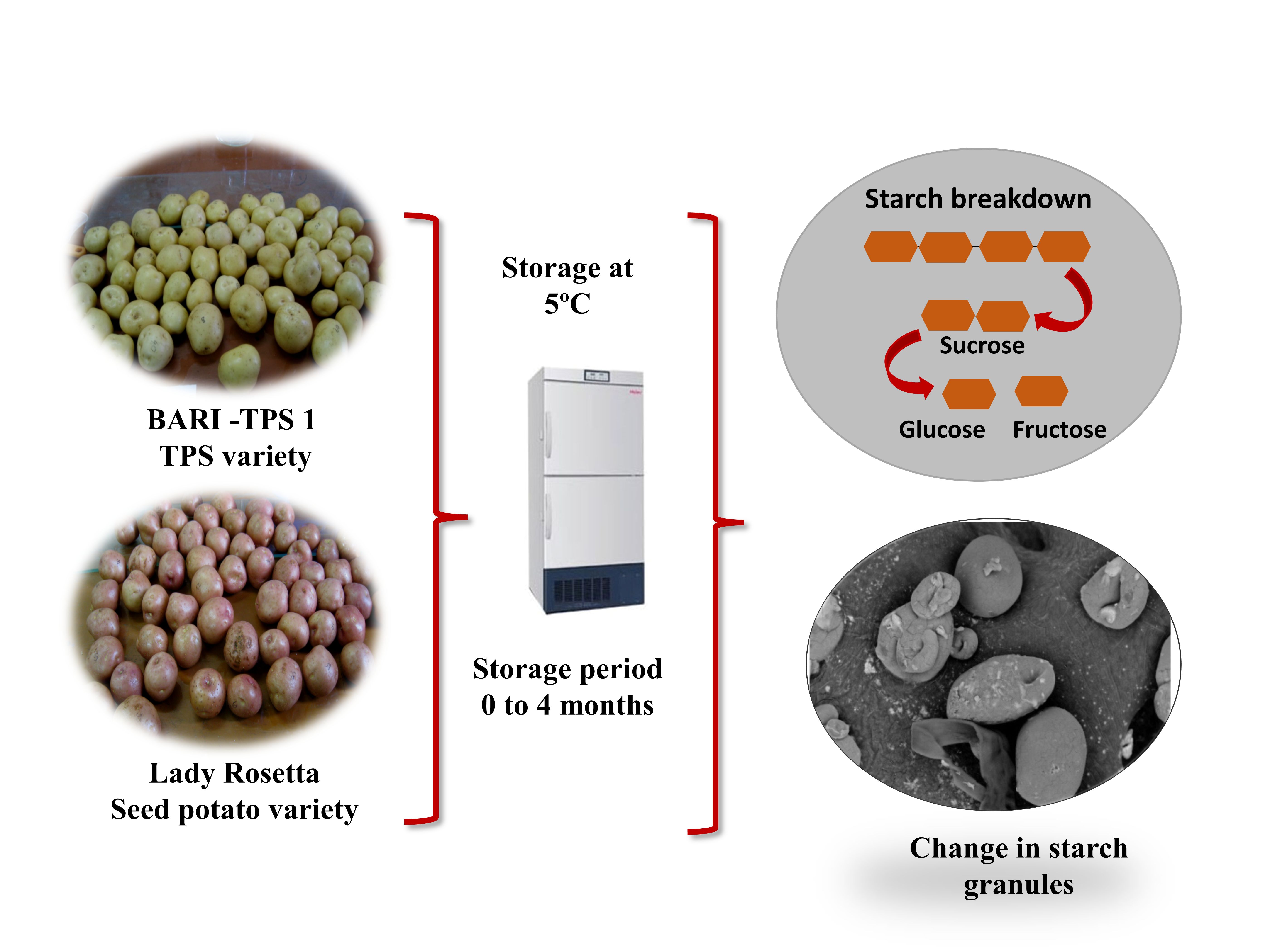Histological and physiological changes of potato starch derived from seed and TPS (true potato seed) grown tubers under different cold storage duration

Published 2021-12-02
Keywords
- Amylopectin,
- Cold storage period,
- Potato,
- Sugar content,
- Starch granule size
How to Cite
Abstract
Starch granules in potato tubers exist with varying sizes and size distribution in nature. In this study both the tubers of seed potato (‘Lady Rosetta’) and true potato seed (TPS) (‘BARI TPS-1’) varieties were stored at 5º C for 0 to 4 months, and the changes in starch break down were analyzed physiologically and histologically to investigate how cold storage affects the starch break down. Although the starch content of both varieties reduced during cold storage, the reduction of starch content in ‘BARI TPS-1’ was higher than that of ‘Lady Rosetta’. However, both volume and ovality (length:width) of starch granule did not change significantly throughout the storage period irrespective of variety, suggesting a non-uniform breakdown of starch granules. Scanning Electron Microscope (SEM) images of starch granule showed non-uniformed deformation and enlarged cavity or hole along the storage period, which indicated that starch breakdown occurred at a specific part of starch granule rather than peripherally and penetration would be deeper in ‘BARI TPS-1’ than that of ‘Lady Rosetta’. However, there was no significant change in granule size distribution in spite of rapid degradation of amylopectin percentage in ‘BARI TPS-1’ than that of ‘Lady Rosetta’, suggesting more susceptibility of ‘BARI TPS-1’ to starch degrading enzyme and higher enzymatic action would cause deeper penetration in ‘BARI TPS-1’ than that of ‘Lady Rosetta’.






